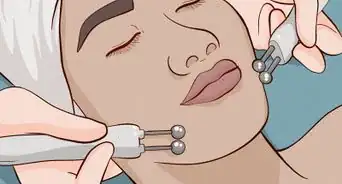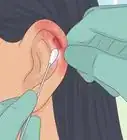This article was medically reviewed by Sarah Gehrke, RN, MS. Sarah Gehrke is a Registered Nurse and Licensed Massage Therapist in Texas. Sarah has over 10 years of experience teaching and practicing phlebotomy and intravenous (IV) therapy using physical, psychological, and emotional support. She received her Massage Therapist License from the Amarillo Massage Therapy Institute in 2008 and a M.S. in Nursing from the University of Phoenix in 2013.
There are 18 references cited in this article, which can be found at the bottom of the page.
This article has been viewed 99,664 times.
Having problems with your skin can make you feel like all eyes are on you. If your skin is raw and irritated, it can make you feel bad about yourself or keep you from doing things with friends. Not to mention it hurts! Raw skin on your body can have many causes, including using products that irritate it, scrapes, or even friction. But raw skin, a type of skin inflammation, is actually a common condition. By determining the cause and treating the area with home care, you can heal raw skin.
Steps
Protecting the Raw Skin
-
1Keep the area clean and dry. Splash your raw skin with cool water and lightly apply a gentle, scent- and alcohol-free cleanser twice each day. Cleanse more often if you notice dirt or debris on the raw areas. Pat the area dry with a clean towel to prevent further irritation. This can clear away debris or bacteria and minimize your risk of infection.[1]
- Avoid scrubbing or rubbing the area too harshly, which can cause irritation.
-
2Apply a protective salve to raw areas. Dab on a thin layer of a protective cream, lotion or ointment that is gentle as well as scent- and alcohol-free. Use products including zinc oxide, petroleum jelly, or aloe on the raw skin and surrounding area. This may help protect your raw skin and soothe any irritation. Ask your pharmacist or doctor for the best type of protective layer for your raw skin.[2]
- Apply the ointment twice per day, or more as needed.
- Petroleum jelly can worsen seborrheic dermatitis, so avoid using it if you have this condition.[3]
Advertisement -
3Cover raw areas with bandages. Select a non-stick or fabric bandage manufactured for sensitive skin. Apply your choice over any raw areas, securing adhesive edges to healthy skin. This can protect the area from contact with your hands or fingers, and extreme temperatures as well as irritants and bacteria, which minimize the risk of infection.[4]
-
4Sprinkle talc-free powder on raw skin. If your raw skin is a result of chafing (friction), apply a powder such as alum or cornstarch to the raw areas. Reapply the powder after showers or anytime your skin is moist. This can whisk away moisture from your skin and prevent further irritation. It may also promote healing by preventing friction.[5]
- Talcum powder has been tentatively linked to cancer when used on genital areas, so avoid these products until further studies have been conducted.[6]
-
5Keep raw skin out of the sun. To allow your skin to heal and protect it from further damage, keep raw skin out of the sun. Avoid the sun during peak hours, like from 10 a.m. to 2 p.m. Wear clothing with long sleeves and pants as well a sun hat. Apply a water-resistant, broad-spectrum sunscreen with an SPF of 30 or higher (only on intact, non-irritated skin) if you do need to be outdoors.[7]
-
6Avoid scratching itchy skin. Scratching can lead to infection, scars, and in severe cases, thickening of the skin. Take an over-the-counter antihistamine or apply a cortisone cream to the skin if it is very itchy or if it is the result of an allergic reaction.[8]
Making Your Skin Feel Better
-
1Draw a warm oatmeal bath. Fill your tub with warm water to a level that reaches your raw skin. Sprinkle the bathwater with colloidal oatmeal, which is a finely ground oatmeal specifically made for the bathtub. Soak in the oatmeal and warm water for 5-10 minutes. Then pat your skin dry and apply a moisturizer. This may soothe raw skin and promote healing.[9]
- Use uncooked oatmeal if you cannot find colloidal oatmeal.
-
2Wear loose, cotton clothing. While your skin is healing, put on loose clothing made of a smooth and breathable fabric such as lightweight cotton. This can prevent further irritation of raw skin. It also increases airflow to promote healing.[10]
- Avoid wearing several layers of clothing. Loosen your clothing to prevent irritation and excess moisture.
-
3Avoid irritants or allergens. Minimize or avoid potentially irritating products or allergens. Use products that are labeled scent-, fragrance-, and dye-free. This may help speed healing and prevent further irritation.[11]
-
4Seek medical attention if your skin doesn’t heal. Even with home care, your raw skin may not heal. Tell your doctor when you noticed the raw skin and what home treatment you’ve done. They can diagnose potential causes or conditions and get you prompt and proper treatment. See a doctor if your raw skin:[12]
- Is so painful that you lose sleep or get distracted from your daily routine
- Becomes painful
- Appears infected
- Won’t heal with self-care
Determining the Cause of Raw Skin
-
1Look for a red rash to identify a yeast or bacterial infection. Examine your raw skin and the affected area around it for a red, inflamed, or itchy rash. These marks scattered across your skin can indicate a bacterial or yeast infection. If you suspect a bacterial or yeast infection, see your doctor, who can diagnose the problem.[13]
- They may suggest better hygiene to clear up the area and prevent future outbreaks. For more severe cases, the doctor will prescribe a prescription medication to soothe and heal the area.
- If you are taking antibiotics, this may cause a yeast infection that leads to raw skin.[14]
-
2Watch for friction flare-ups in areas that rub fabric. Notice if the areas of your skin that are raw are on your thighs, groin, underarms or nipples. These may be the result of friction from wearing tight clothing, shoes, or skin rubbing on skin. Soothe these areas with a thin layer of protective salve. This can also prevent future raw skin from friction.[15]
-
3Rule out products gradually to identify irritants. Review any products that touch your skin including your skincare, detergents, or topical medications. Gradually remove individual products from your routine until you figure out which one is causing the raw skin. Discontinue use of the product to see if your skin heals or calms down. [16]
-
4Check exposure to allergens. See if your raw skin is on an area exposed to or touched by potential allergens such as plants, detergents, food, or animals. This can indicate an allergic reaction that may heal by discontinuing use or avoiding the allergen. Taking an oral over-the-counter antihistamine may relieve pain and inflammation and promote healing.[17]
- An allergic rash can happen in conjunction with raw skin caused by irritants.[18]
-
5Keep the raw area dry if you have intertrigo. Intertrigo is a rash that forms between folds of skin. Examine your raw skin for mirroring on either side, and notice if the skin also appears moist, thin, or like it has lost several layers, all of which can indicate intertrigo. Keep the area dry by exposing it to air or dabbing a towel on it to promote healing.[19]
- Intertrigo rashes can present on parts of the body exposed to heat or moisture.[20]
- You should stay cool and avoid sun exposure to prevent further irritation.
-
6Examine skin for seborrheic scales. Check your raw skin for scales or rough patches. If the raw skin is greasy skin and has yellowish scales, you may have seborrheic dermatitis.[21] This may also be atopic dermatitis (eczema) in rare cases. See your doctor for a definitive diagnosis.[22]
- Your doctor can suggest the most appropriate treatment, such as light therapy or antifungal medication, to soothe and heal your raw skin.
- This type of raw skin generally appears on the scalp, face, upper chest, and back.
- Avoid using petroleum jelly if you have seborrheic dermatitis, as it can worsen the condition.[23]
-
7Reduce your stress. Stress can affect the body’s immune system, which can create skin issues like acne and eczema.[24] Reduce your stress level by eating healthy, getting enough sleep, and exercising regularly. You can also make time for things you enjoy and participate in calming activities like yoga.
Expert Q&A
Did you know you can get expert answers for this article?
Unlock expert answers by supporting wikiHow
-
QuestionI have a yeast infection and my vaginal area is itchy. I scratch it, so much that the skin is light pink ad tougher. Will the skin ever go back to its normal color and texture?
 Sarah Gehrke, RN, MSSarah Gehrke is a Registered Nurse and Licensed Massage Therapist in Texas. Sarah has over 10 years of experience teaching and practicing phlebotomy and intravenous (IV) therapy using physical, psychological, and emotional support. She received her Massage Therapist License from the Amarillo Massage Therapy Institute in 2008 and a M.S. in Nursing from the University of Phoenix in 2013.
Sarah Gehrke, RN, MSSarah Gehrke is a Registered Nurse and Licensed Massage Therapist in Texas. Sarah has over 10 years of experience teaching and practicing phlebotomy and intravenous (IV) therapy using physical, psychological, and emotional support. She received her Massage Therapist License from the Amarillo Massage Therapy Institute in 2008 and a M.S. in Nursing from the University of Phoenix in 2013.
Registered Nurse Vaginal itching is extremely uncomfortable! Please seek treatment from your doctor if you are unable to prevent scratching the already irritated area. Without knowing the extent (and location) of the skin damage from scratching, it is difficult to say for certain how long it will take for your skin color and texture to return to it's non-inflamed state. It is possible, once you heal the yeast infection and stop itching, that with time your skin can return to your normal color and texture.
Vaginal itching is extremely uncomfortable! Please seek treatment from your doctor if you are unable to prevent scratching the already irritated area. Without knowing the extent (and location) of the skin damage from scratching, it is difficult to say for certain how long it will take for your skin color and texture to return to it's non-inflamed state. It is possible, once you heal the yeast infection and stop itching, that with time your skin can return to your normal color and texture. -
QuestionIf a person is not bed ridden, but can stand or walk for very short period, what can be done to heal raw skin at end of the spine on the buttocks? So far, creams have provided minimal relief.
 Sarah Gehrke, RN, MSSarah Gehrke is a Registered Nurse and Licensed Massage Therapist in Texas. Sarah has over 10 years of experience teaching and practicing phlebotomy and intravenous (IV) therapy using physical, psychological, and emotional support. She received her Massage Therapist License from the Amarillo Massage Therapy Institute in 2008 and a M.S. in Nursing from the University of Phoenix in 2013.
Sarah Gehrke, RN, MSSarah Gehrke is a Registered Nurse and Licensed Massage Therapist in Texas. Sarah has over 10 years of experience teaching and practicing phlebotomy and intravenous (IV) therapy using physical, psychological, and emotional support. She received her Massage Therapist License from the Amarillo Massage Therapy Institute in 2008 and a M.S. in Nursing from the University of Phoenix in 2013.
Registered Nurse Even when a person is not bedridden but can only stand or walk for a short period, they can still have compromised (lessened) circulation to the skin. [[Treat Bedsores|Determining the stage]] of the raw skin is crucial to the treatment. It is important to relieve pressure from the end of the spine and off of the buttock as much as possible while in bed and sitting. Re-position the person frequently using pillows and other props (at least every two hours, if not more often). Depending on the stage and exact location of the raw skin, you may try using an inflatable donut for sitting. Please seek advice from a doctor to help you determine the best route to take.
Even when a person is not bedridden but can only stand or walk for a short period, they can still have compromised (lessened) circulation to the skin. [[Treat Bedsores|Determining the stage]] of the raw skin is crucial to the treatment. It is important to relieve pressure from the end of the spine and off of the buttock as much as possible while in bed and sitting. Re-position the person frequently using pillows and other props (at least every two hours, if not more often). Depending on the stage and exact location of the raw skin, you may try using an inflatable donut for sitting. Please seek advice from a doctor to help you determine the best route to take.
References
- ↑ http://www.womendailymagazine.com/heal-raw-skin-tips-treatments/
- ↑ http://www.mayoclinic.org/diseases-conditions/dermatitis-eczema/manage/ptc-20204515
- ↑ https://www.aad.org/public/diseases/scaly-skin/seborrheic-dermatitis#tips
- ↑ http://woundcaresociety.org/do-wounds-heal-better-covered-or-uncovered
- ↑ https://mom.me/baby/29228-16-talc-free-alternatives-baby-powder/
- ↑ https://www.cancer.org/cancer/cancer-causes/talcum-powder-and-cancer.html
- ↑ https://www.aad.org/media/stats/prevention-and-care/sunscreen-faqs
- ↑ http://emedicine.medscape.com/article/1049216-overview
- ↑ http://www.mayoclinic.org/diseases-conditions/dermatitis-eczema/manage/ptc-20204515
- ↑ http://www.mayoclinic.org/diseases-conditions/dermatitis-eczema/manage/ptc-20204515
- ↑ http://www.mayoclinic.org/diseases-conditions/dermatitis-eczema/manage/ptc-20204515
- ↑ https://health.clevelandclinic.org/2017/02/how-to-tell-if-allergies-are-causing-your-babys-diaper-rash/
- ↑ http://www.healthline.com/health/skin/cutaneous-candidiasis#treatments5
- ↑ http://www.mayoclinic.org/diseases-conditions/diaper-rash/basics/causes/con-20019220
- ↑ http://www.webmd.com/skin-problems-and-treatments/guide/chafing-causes-treatments
- ↑ http://www.mayoclinic.org/diseases-conditions/dermatitis-eczema/symptoms-causes/dxc-20204412
- ↑ https://www.aad.org/public/diseases/eczema/contact-dermatitis#tips
- ↑ http://www.mayoclinic.org/diseases-conditions/diaper-rash/basics/causes/con-20019220
- ↑ https://www.ncbi.nlm.nih.gov/pmc/articles/PMC2918610/
- ↑ https://health.clevelandclinic.org/2017/02/how-to-tell-if-allergies-are-causing-your-babys-diaper-rash/
- ↑ https://www.aad.org/public/diseases/scaly-skin/seborrheic-dermatitis
- ↑ http://www.mayoclinic.org/diseases-conditions/dermatitis-eczema/symptoms-causes/dxc-20204412
- ↑ https://www.aad.org/public/diseases/scaly-skin/seborrheic-dermatitis#tips
- ↑ https://www.aad.org/public/diseases/scaly-skin/seborrheic-dermatitis
About This Article
If you have raw skin, keep the area clean and dry and cover it with a bandage to keep it from getting infected. In the meantime, you can soothe your skin with a variety of natural remedies. For example, wear loose, cotton clothing which will prevent your skin from chafing. If your raw skin is itchy, try soaking in a warm bath with colloidal oatmeal, which is known to soothe skin. Just make sure to avoid soaps that have fragrances or dyes, which may irritate your skin. If your skin becomes painful or infected, see your doctor for additional treatment. To learn how to determine the cause of your raw skin, read more from our Medical co-author! To learn how to determine the cause of your raw skin, read more from our Medical co-author!

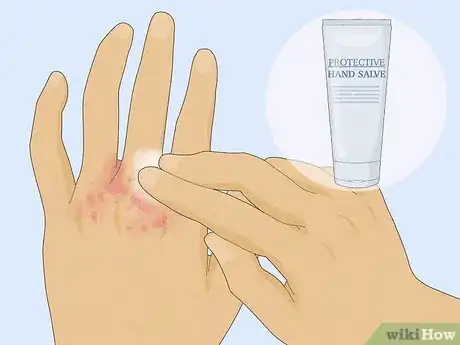
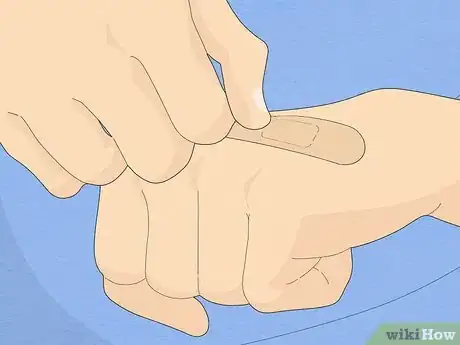
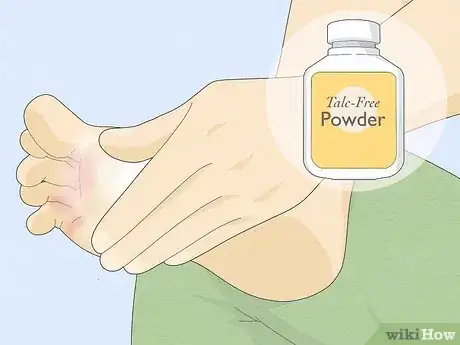




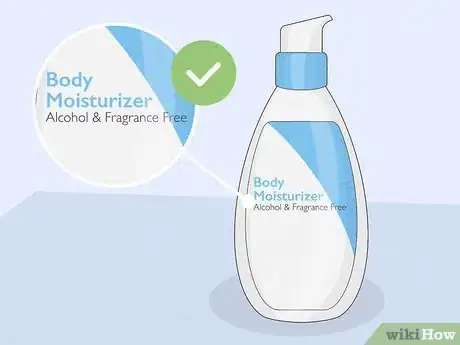
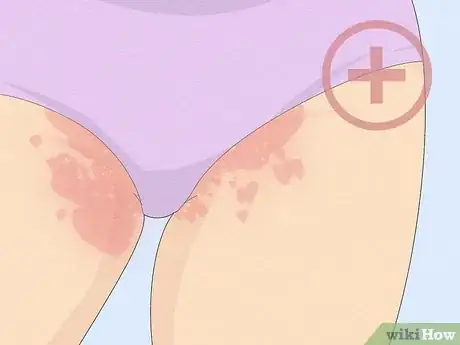
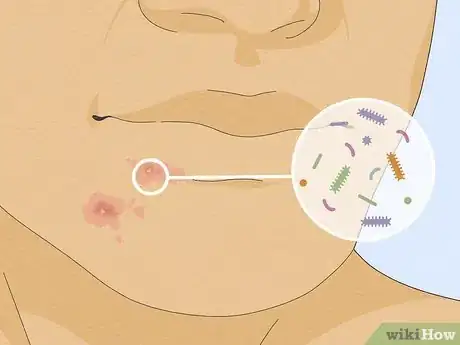



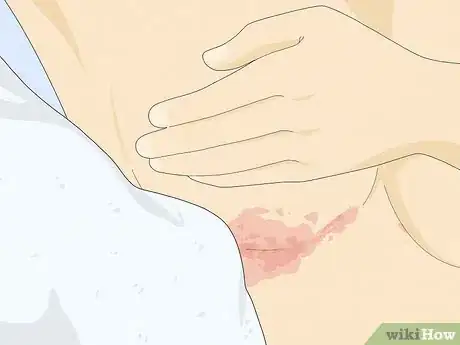







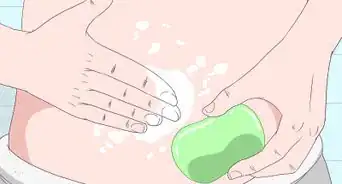
-Electric-Shock-Step-9.webp)

